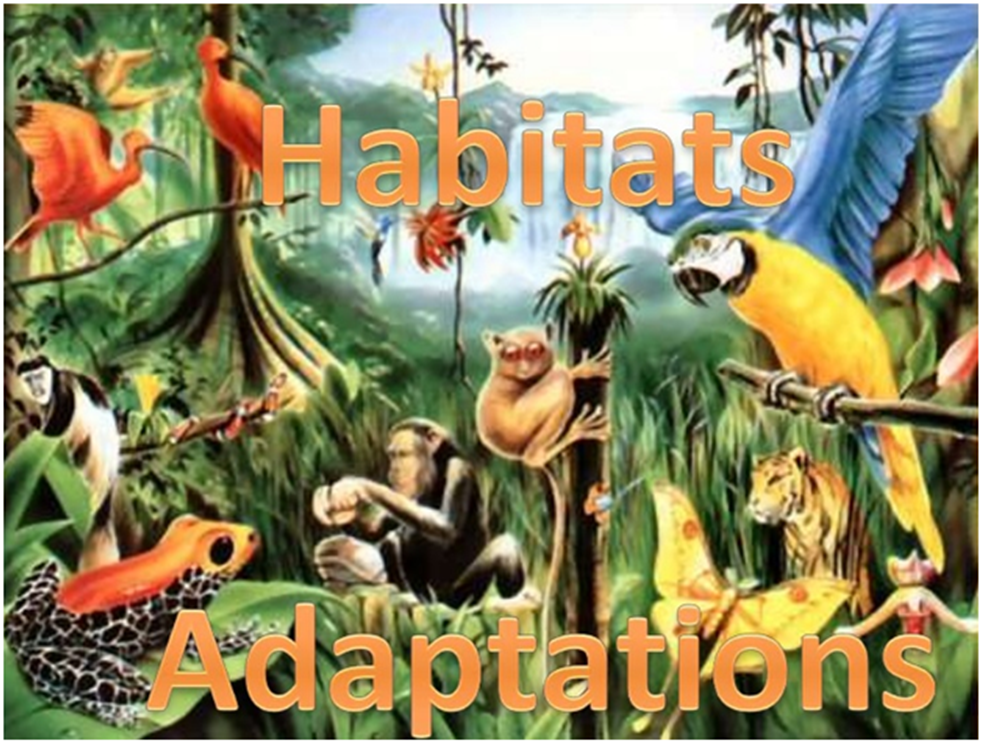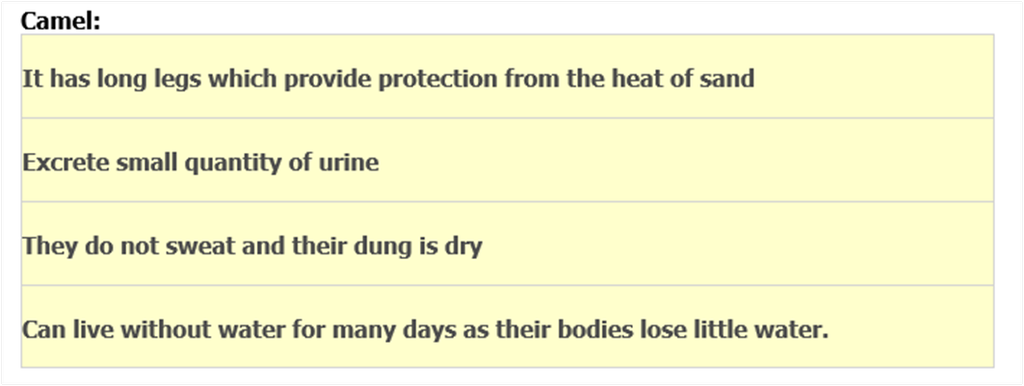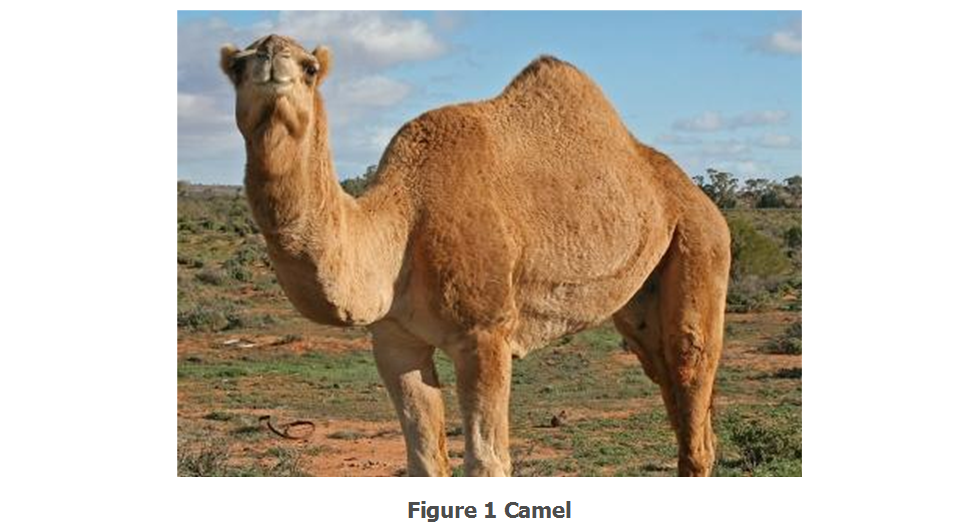- Books Name
- CBSE Class 6 Science Book
- Publication
- Param Publication
- Course
- CBSE Class 6
- Subject
- Science
Habitat And Adaptation
(a) Habitat :
The term habitat refers to the surroundings where organisms live.Every habitat is home for a certain living creature. Plants and animals have different features that help them to survive in their own habitat.
The components in a habitat are broadly classified into two types. they are biotic and abiotic.
Biotic components include all the livings organisms in a habitat. Abiotic components include all the non-living things in a habitat. These include air, rocks, water, sunlight and heat. All livings things depend on the abiotic components for all their needs. The abiotic components are very useful for the survival of the biotic components in a habitat. For example, sprouting is the first step where a new plant grows from a seed. The sprouting of a seed depends on abiotic components such as air, water, light and heat.
• The population of some species of turtles has declined due to the change in the earth’s temperature.
• Some popular theories believe that dinosaurs became extinct because of the changes in the earth’s temperature millions of years ago.
• Habitat can be terrestrial or aquatic :
• Terrestrial habitat : It refers to the land where all plants and animals survive. It includes mountains, deserts, forests and grasslands, as well as coastal and mountain regions. For example, camels and cactus plants live in deserts only.
• Aquatic habitat : It refers to the water where plants and animals survive. Aquatic habitat includes rivers, ponds, lakes, ocean and swamps.
(b) Adaptation :
Plants and animals develop certain features or certain habits that help them survive in their surroundings, and this is known as adaption. Different living creatures adapt to their habitats in different ways. For example, fish have gills that help them to live in water and use the oxygen dissolve in it. Plants that live in water have special tissues that help to take in dissoved gas from water. For example the ulva has ribbon-like leaves.
It takes thousands of years for a livings being to adapt to its habitat.
- Books Name
- Class 6 Science Book
- Publication
- PathSet Publications
- Course
- CBSE Class 6
- Subject
- Science
Habitat And Adaptation

Animals benefit a lot from their habitats. For example, rabbits live in a forest habitat by building a burrow in the soil; they get food from the plant products; they obtain fresh air they breathe. Habitat provides air, food, water and shelter to an animal.
The place where an organism naturally lives and reproduces is called a habitat.
The soil and climate conditions on land are varied in different parts of the earth. Organisms tend to adjust to the conditions and environment they live in. The unique characteristics of plants and animals that enable them to successfully survive in a particular environment are called as adaptation.
Light :
- The sunlight is essential for the survival of the biotic components as the sun is the ultimate source of energy for all living things.
- The sunlight affects growth, flowering, seed germination and in many other ways in plants. Indoor plants put in the shade for a long time grow faster but become delicate and weak.
- Light also affects animals. Animals living in caves and burrows where sunlight cannot reach have very much reduced eyes e.g., Proteus. Amblyopsis do not have eyes.
- Nocturnal animals: Some animals like bats, cockroaches and owls are called nocturnal as they are active during the night.
Temperature :
- Temperature regulates growth, movement, reproduction, morphology and other aspects of life.
- Animals living in hot areas e.g., snakes, desert rats and lizards are not able to get sufficient water. They have thick skin and do not sweat.
- Desert animals e.g., camels have long legs. Long legs help them to lift their body above the ground. Thus, they can avoid direct contact with the hot ground.
Water :
All living organisms need water for their survival.
Aquatic plants:
Aquatic plants have the following adaptations:
- The root system is poorly developed.
- Air-filled cavities found inside the body make them spongy and buoyant.
- Leaves in submerged plants are thin and narrow; while in floating plants, they are big and flat with a waxy coating.
Desert plants:
Desert plants carry the following adaptations:
- Well-developed root systems.
- Stem is succulent and spongy which helps in storage of water. It is also green and performs photosynthesis.
- Stomata (sunken) are less in number.
- Leaves are either very small or converted into spines.
Habitat and Adaptation
The region or place where an organism lives is termed as its habitat. Habitat provides an organism everything it needs to survive like food, shelter, proper weather conditions such as rainfall, heat etc. to breed and flourish.


Fish
- Their streamline shape helps to move easily in water
- Presence of slippery scales
Gills help in respiration.
- Flat fins and tail help in changing direction in the water
- Tapering ends.

 Param Publication
Param Publication
 PathSet Publications
PathSet Publications
